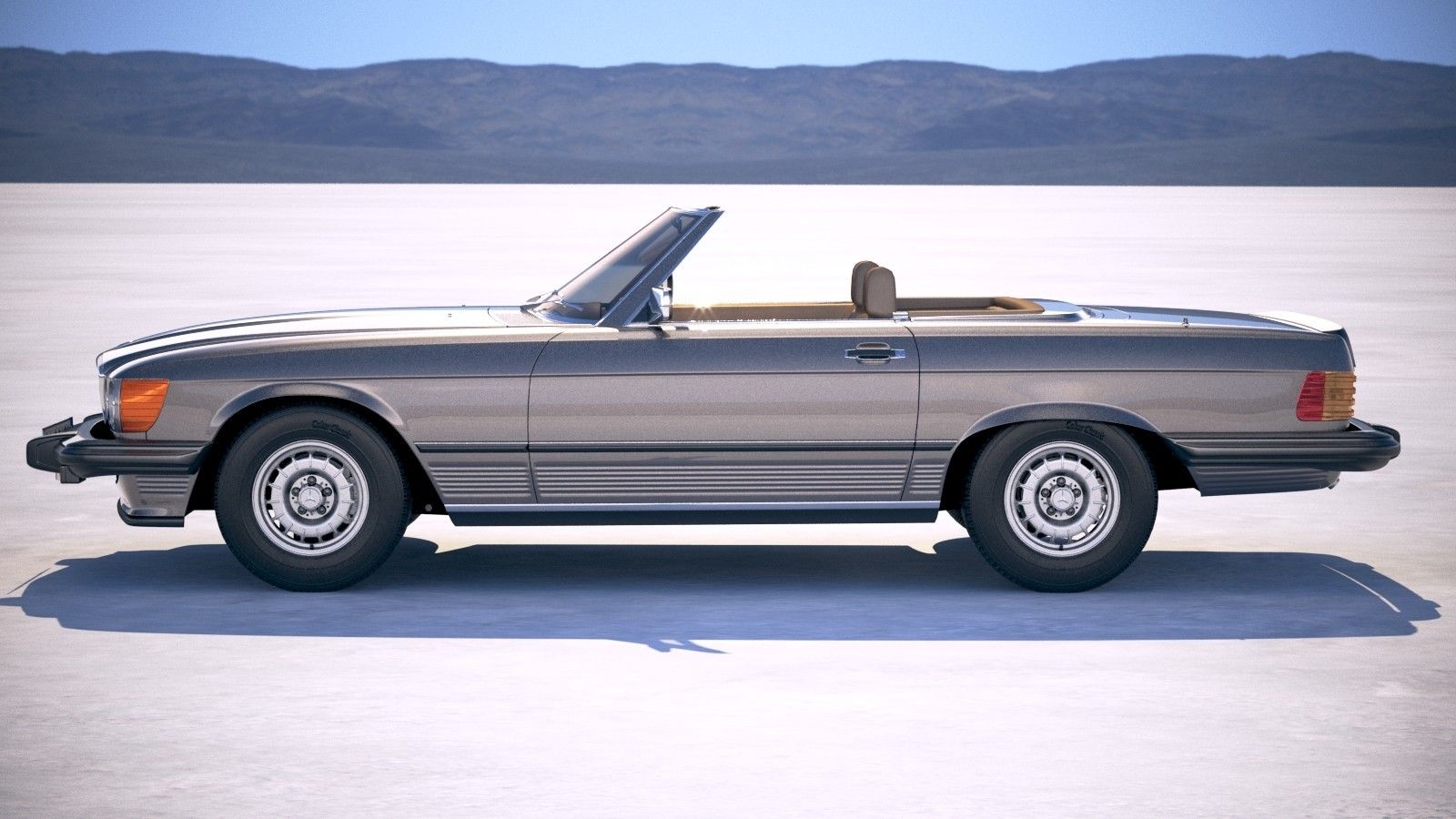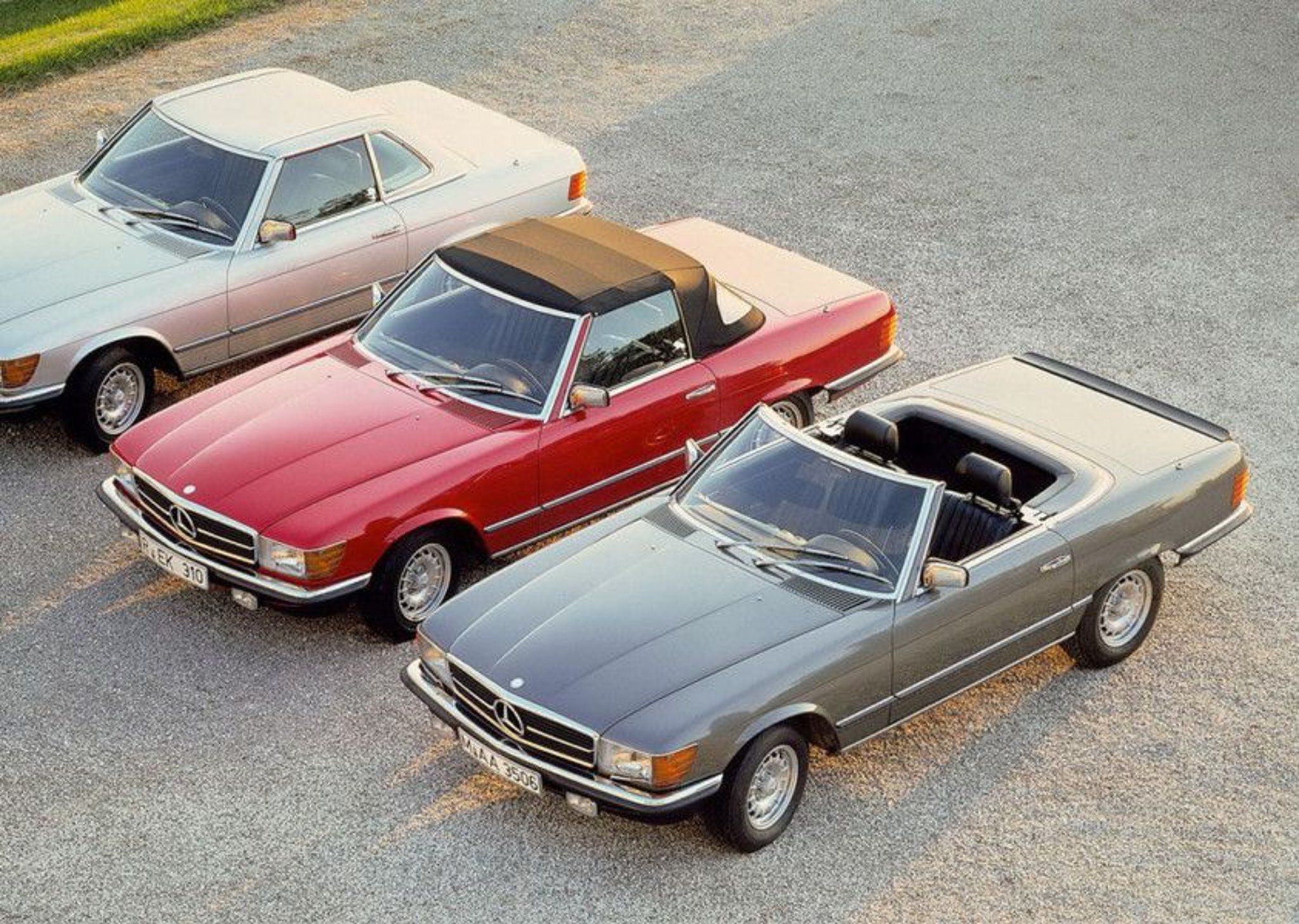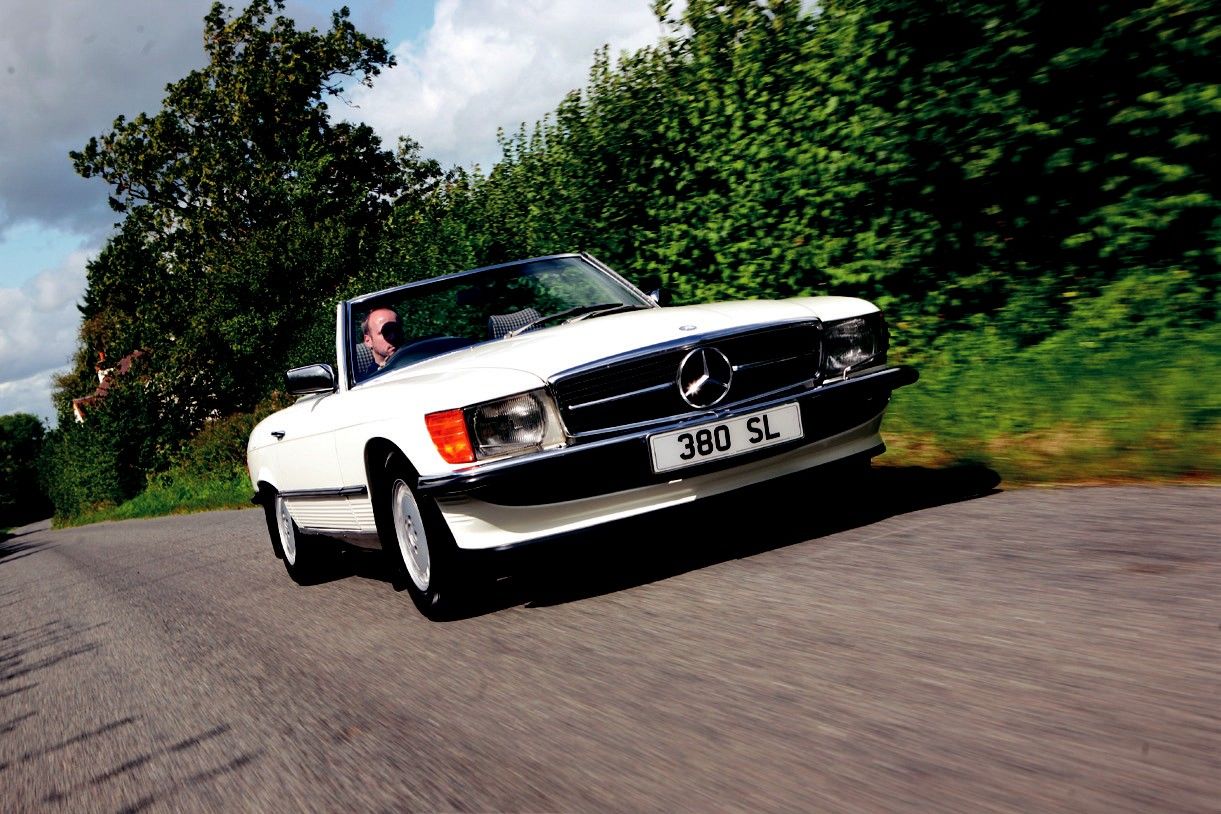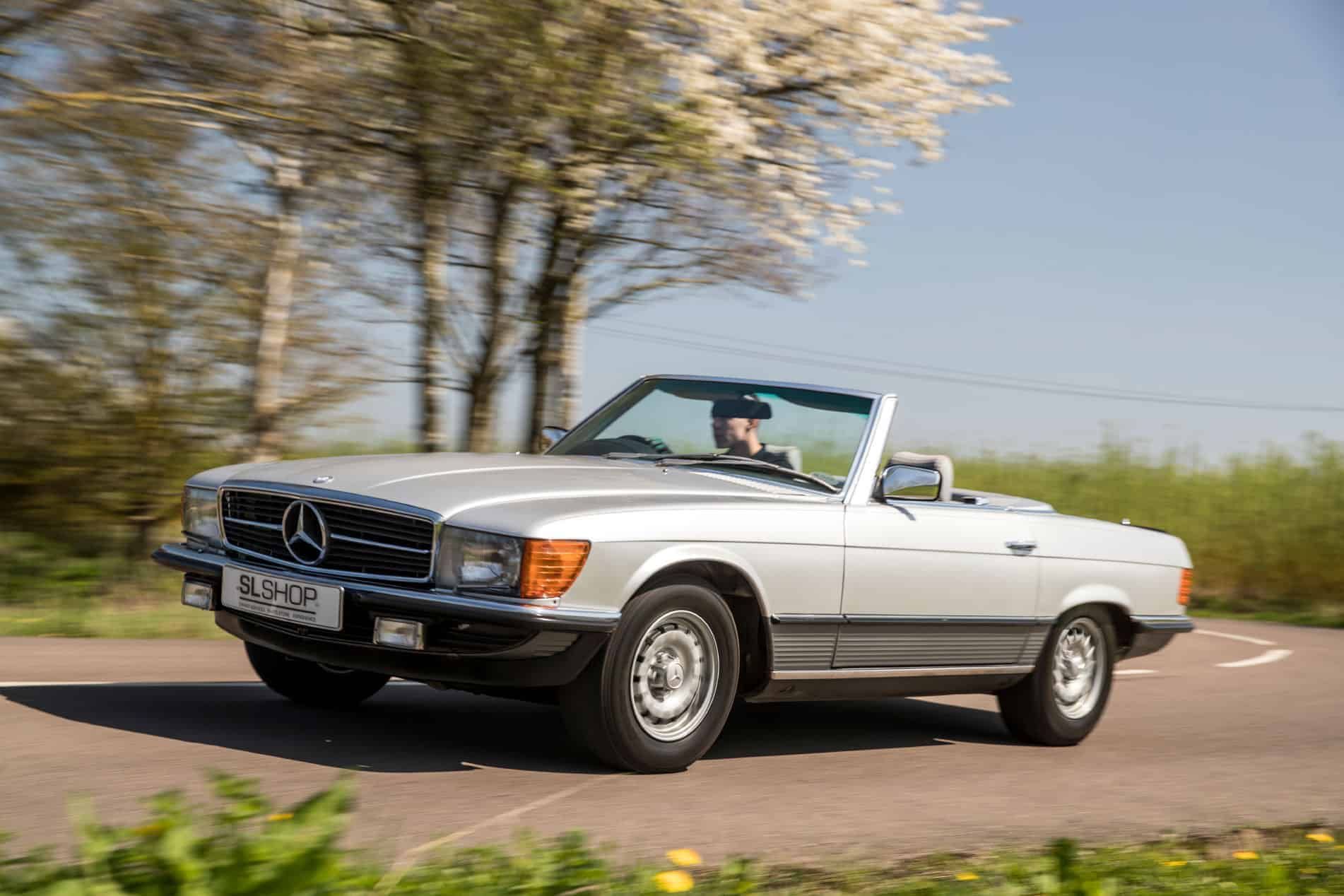"Sports car" and "durable" are not often two words that can be said in the same sentence, unless they're connected by a phrase like "are not." There are a few models that buck this trend, but most sports cars are lithe and delicate things, to be handled with a light touch. They often need special maintenance and care, and a stiff, lightweight chassis is not best suited for comfort on long drives.
Reading its name before seeing one, you might think the Mercedes-Benz SL R107 (1971-1989) would fall into that latter category of sports car. "SL" stands for "sport-light," but it's more of a humorless German joke than an accurate descriptor of the SL's dynamics.
Because it was impossible for Mercedes to make a flimsy car in the late-'60s and '70s, the R107 SL benefits from the same solidity and heft as more conventional Benzes of the era. But it doesn't look hefty; in fact, it looks rather elegant and beautiful, a timeless design spoiled only slightly by American-spec bumpers and lights (more on that later).
The SL was a very popular car in its day, which paired with contemporary Mercedes toughness, means it is still a fairly common machine on the roads today. Mercedes moved over 300,000 R107s in its 18 years of production, two-thirds of which were sold in North America. This means there's quite a ripe market for them around the world, and it's one of the most affordable and best value pathways into the world of classic cars.
Read on to find out why the R107 SL is an underrated classic, and why you should consider buying one.
R107 Chassis: Not The Priceless Pagoda
As mentioned at the top, the R107 chassis was launched in 1971, replacing the previous generation "W113" SL models, which included the famous and fantastically valuable 280 SL Pagoda. Scarcity is partially to blame for the older cars being a lot more valuable: R107s out-sold W113s by a factor of six, despite them still being more expensive when new than a lot of rivals. A brand new R107 SL was almost twice the price of a contemporary Jaguar E-Type, although the Merc would more than likely make up that price difference in savings on repairs over its life.
Indeed, reliability is one of the R107's biggest draws, but before we get to that scintillating topic, we must first discuss design. The R107 SL, with the European bumpers and lights, is quite possibly the most beautiful 1970s design and one which is aging with the finesse and grace of Jennifer Aniston.
Just look at it: arrow-straight lines, tight radiuses, an imposing but non-aggressive stance, an iconic face and some of the best OEM wheel designs in history. The R107 SL is gorgeous from any angle, and it gets better as the more you dissect the details. It was one of the first cars with ridged cladding down the bottom half of the doors, which was supposed to be for aerodynamics. Later models got a front air dam to improve front-end grip, but it also accentuated the styling of the front end brilliantly.
The R107 SL isn't a very big car either: some models have rear seats but they're there in name only. The wheelbase is short, overhangs are fairly long, as was the norm for coupes and roasters of the period, and the proportions are just right. Regardless of price, it's one of the best-looking classic cars you can get into.
Durability Is Key
Building quality automobiles has long been Mercedes' M-O, but the definition of a quality automobile today is quite a bit different to what it once was. In the '60s and '70s, quality was measured not in the sum total of a car's technology or features, but instead in the quality of the materials used, the fit and finish, and longevity. A Mercedes-Benz 280 D is the runner-up for the highest mileage ever recorded, racking up nearly 3 million miles doing taxi duty in Greece.
Sometimes, this came at the cost of lightweight and handling, which was definitely true of certain SLs. If you didn't spec the bigger engine, the car's 3,500 lb curb weight can present itself as a bit of a problem. It makes the car feel slow, and a bit ponderous, but never does it feel like it's anything close to falling apart.
The early models came in either 350/450 SL (renamed in 1973) with a 4.5 L V8 or the grey-market 500 SL, with a 5.0 L V8. There were more engine options in Europe, but initially, there were only two in North America. All North American cars came with a three-speed automatic transmission, although a manual was available in Europe.
1981 would see the first major refresh to the model since its inception a decade prior, and it brought with it some new engines and a new four-speed automatic transmission. For the US market, the entry-level engine shrunk to a 3.8 L inline-6 (though it didn't lose any power to the old 4.5) in the 380 SL, or a 5.5 L V8 in the range-topping 560 SL. The latter produced somewhere in the environs of 240 HP, which was power a-plenty to smoke anything domestic from the malaise era at the lights.
The R107 Today: A Brief Buyer's Guide
We've harped on this car's durability quite a bit in this piece, and while it's true that this is a far better-engineered vehicle than most of its counterparts, SLs are not without faults. Here are a few to look out for, courtesy of CarClassic:
Low mileage isn't always better: Just because an odometer reads low doesn't necessarily mean the car will be in great shape. SLs, like most cars, need to be driven regularly to keep fluids flowing through the components, and to keep rubber and plastic bits from perishing. One particularly important plastic bit to note are the timing chain guides. These can fail, and if they do it could require an extensive - and expensive - engine rebuild. Listen for a ticking or rattling sound on startup to identify this.
Check for rust: This goes without saying as a general rule, but there are some particular points to focus on with R107s. Pay attention to the subframes, particularly on V8 cars, not just for rust but also for cracking. Also check all rubber seals, and make sure the soft top isn't torn and functions properly.
Bosch fuel injection: The R107 uses a Bosch Jettronic fuel injection system, which can be time-consuming and expensive to service if it's not working correctly. Look for any kind of hesitation on a cold startup, misfires, or general unhealthy sounds coming from the engine bay. The engine should idle and rev smoothly.
Beyond that, just make sure the car you're looking at is to your taste. There were tons of different colors, interior materials, and option packs for the SL, so it's likely that no two cars will be anything like the same thing. In North America, you're likely to get a better price on a US-spec car, which is distinct from European cars by having bigger bumpers and twin round headlights rather than a single rectangle per side.
Prices range anywhere from a few thousand bucks for a project car all the way to and beyond $30,000 for the cleanest examples. For that kind of money, an R107 SL isn't an impossible proposition for a lot of buyers. What was once a dream car can now be had for a fraction of what it once cost, and it won't come with a lot of the headaches most dream cars do.
The SL is also rumored to be getting quite a sporty overhaul for the 2022 model year, likely to be built on a downsized version of the AMG GT chassis, which sounds quite promising indeed.




